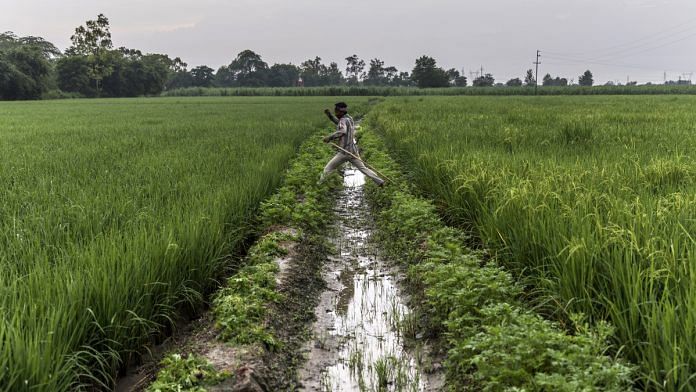New Delhi: India’s agriculture sector isn’t the bright spot in the economy that many think it may be.
While farming was the only industry to post positive growth in the June quarter’s gross domestic product data, the rapid spread of the coronavirus in rural areas and declining prices are set to weigh on the outlook.
The optimism about the sector has been fueled by timely rains, a good monsoon and an increase in the crop area. But here’s a look at the risks that may curb growth going forward:
Least productive
With manufacturing and the dominant services sectors contracting sharply after lockdown measures to stem the pandemic, expectations are piling on the farm sector to support an economy headed for its first full-year contraction in more than four decades.
“Agriculture is like a safety net,” Siraj Chaudhry, managing director and chief executive officer of National Collateral Management Services Ltd., said about the sector that accounts for about 15% of the economy. “There is a large percentage of people who are dependent on agriculture and what it does is essentially take care of the food for that population. Agriculture will help you to draw the match rather than win the match.”
Also read: Indian economy contracts by 23.9% in Covid-hit Q1 of 2020-21, fiscal situation worsens
Virus impact
While the 3.4% growth in agriculture and allied activities was the “only saving grace” amid an economic contraction of 23.9% in the last quarter, that performance was expected as the government had imposed the least restrictions on this sector, said Soumya Kanti Ghosh, chief economist at State Bank of India.
What’s worrying to him is that the growth in nominal agriculture GDP came in at 5.7%, as against an average 13.5% in the previous two quarters. Also, with Covid-19 infections now spreading in the rural areas, the next quarter could easily give up the gains seen now, he said.
India is already fast becoming the new global hotspot for coronavirus, with more than 75,000 cases reported daily and total infections nearing 4 million.
Falling prices
For now, better-than-normal rains have set the stage for bumper food grain output, with the area under monsoon-sown crops including rice, oilseeds, corn and cotton at 108.2 million hectares as of Aug. 28, up 7.2% from a year earlier, according to the farm ministry.
While a good harvest will help put a lid on inflation by checking food prices, it also means lower income for farmers and allied workers who make up 70% of the country’s workforce. Besides, the hospitality industry — one of the biggest consumers of perishables — is yet to fully reopen, and that can affect demand and prices. That, in turn, could crimp consumption, the backbone of the economy.
A large part of rural demand, notwithstanding the encouraging sales number of motorcycles and tractors in June, comes from consumer non-durables, according to Sunil Kumar Sinha, principal economist at India Ratings and Research Pvt. in Gurugram, near New Delhi.
In the midst of all the gloom and doom in the economy, nice to see that the tractor industry had a small growth this May compared to May last year. May be Bharat will carry India. @MahindraRise @PMOIndia @amitabhk87
— Pawan K Goenka (@GoenkaPk) June 1, 2020
“The hope is that while the industrial and services sectors are still struggling to recover from the adverse impact of Covid-19, the agricultural sector could become an engine for economic recovery,” Sinha said. “Rural demand at best can extend support to consumption demand, but cannot be a substitute for urban demand.”
Labour oversupply
Already, abundant labor supply in India’s hinterland — as a result of millions of workers fleeing the cities for their rural homes — has resulted in depressed earnings for individuals, leaving them with little purchasing power to lift the economy out of a ditch.
Although agriculture is playing a positive role in the economy at present, it doesn’t have the heft to make up for the shortfall in other sectors, Dharmakirti Joshi, chief economist at Crisil Ltd., said on Aug. 24.- Bloomberg
Also read: India has paid economic price of lockdown but hasn’t got public health dividend in return






